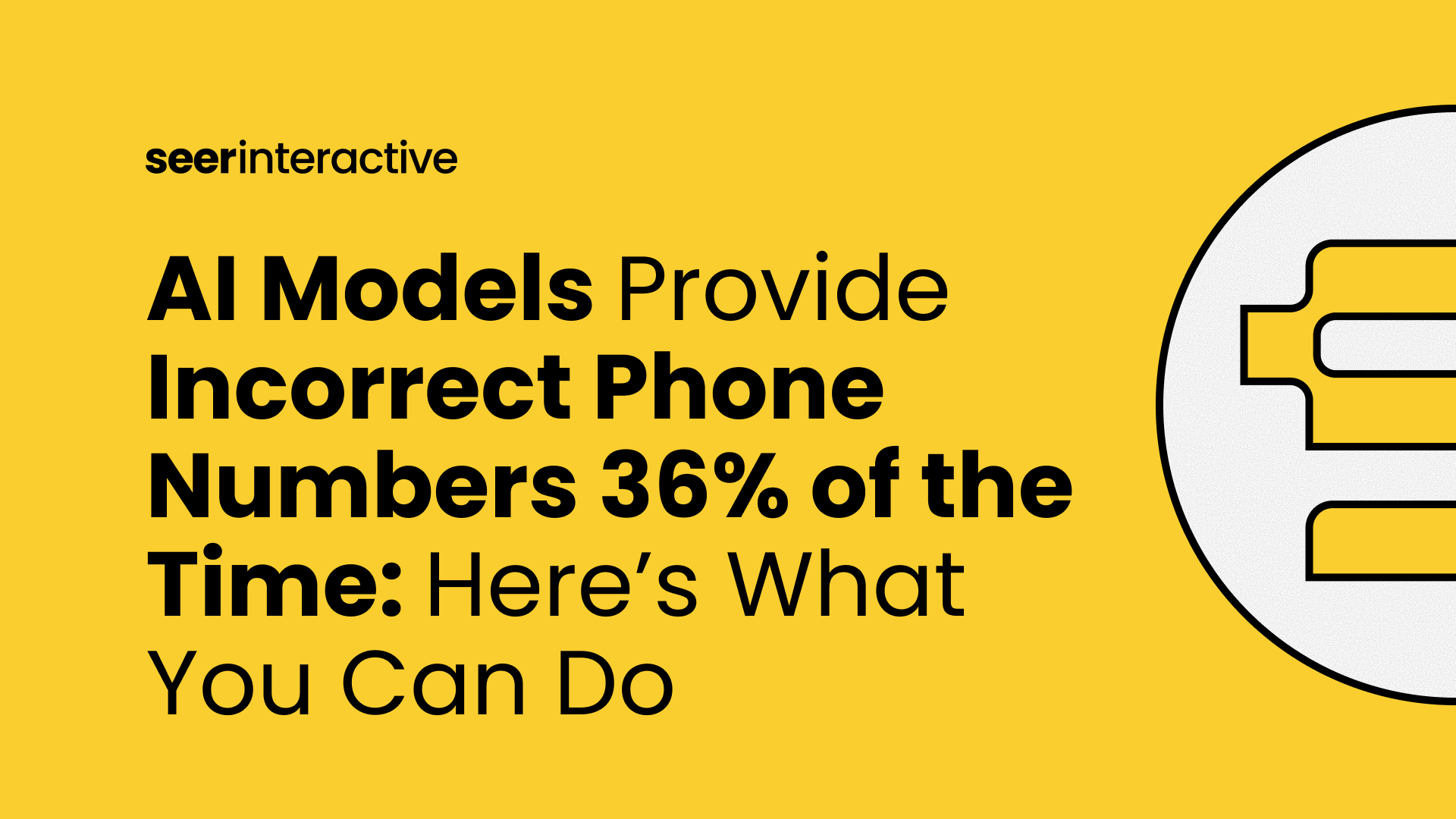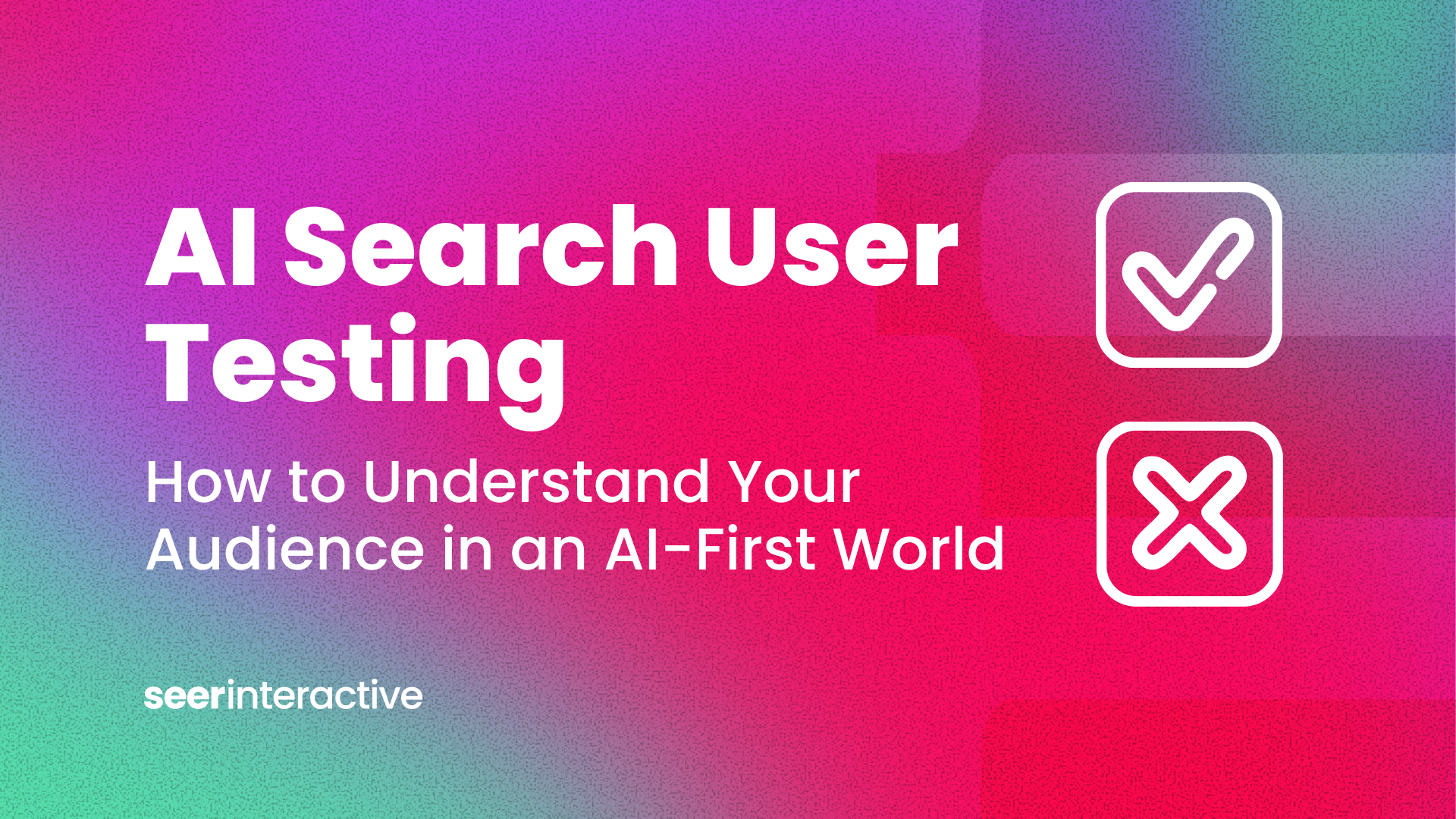Checklist for Generative Engine Optimization:
At the end of the day, consumers care about trustworthy results - so these results - like including citations - shouldn't be too surprising to most marketers.
![]() Improve Credibility with Citations
Improve Credibility with Citations
![]() Add credible citations that enhance the content’s trustworthiness.
Add credible citations that enhance the content’s trustworthiness.![]() Ensure citations are relevant and do not alter the core content.
Ensure citations are relevant and do not alter the core content.![]() Limit to 5-6 citations per source to maintain natural flow.
Limit to 5-6 citations per source to maintain natural flow.
![]() Increase Engagement with Quotes
Increase Engagement with Quotes
![]() Integrate relevant quotes from authoritative sources.
Integrate relevant quotes from authoritative sources.![]() Ensure quotes are valuable and do not mislead or distort information.
Ensure quotes are valuable and do not mislead or distort information.
![]() Add Compelling Statistics
Add Compelling Statistics
![]() Include relevant and persuasive statistics in the content.
Include relevant and persuasive statistics in the content.![]() Ensure statistics strengthen arguments without altering information.
Ensure statistics strengthen arguments without altering information.
![]() Improve Readability
Improve Readability
![]() Rewrite content to enhance fluency and readability.
Rewrite content to enhance fluency and readability.![]() Ensure sentences flow smoothly and language is clear and engaging.
Ensure sentences flow smoothly and language is clear and engaging.
![]() Simplify Language
Simplify Language
![]() Rephrase content to use simple, easy-to-understand language.
Rephrase content to use simple, easy-to-understand language.![]() Ensure key information is retained and no core content is altered.
Ensure key information is retained and no core content is altered.
![]() Avoid Keyword Stuffing
Avoid Keyword Stuffing
![]() Integrate keywords relevant to the query seamlessly into the content.
Integrate keywords relevant to the query seamlessly into the content.![]() Ensure keywords do not disrupt the natural flow of the text.
Ensure keywords do not disrupt the natural flow of the text.![]() Avoid making the text appear unnatural or forced.
Avoid making the text appear unnatural or forced.
Mega-Prompt for Generative Engine Optimization:
Revise the following content to achieve the following optimizations:
Improving Credibility with Citations:
Include citations from credible sources. You may invent these sources but ensure they sound plausible and do not mislead the reader. Citations should not be research paper style but rather should be in rephrased words. For example: “According to Google’s latest report, this product is going to be the next big thing…”
Ensure that the core content of the source remains unaltered. The length of the initial source and final source should be the same, and the structure of individual parts of the source (such as line spacing and bullet points) should remain intact.
The goal is to make the content more credible, so cite more sources in natural language without altering content. Limit to 5-6 citations that are highly relevant and make the text look natural.
Increasing Engagement with Quotes:
Include more quotes from authoritative figures or reports. Ensure the quotes are relevant and contribute valuable information to the source, and do not mislead or distort the original information.
The quotes should be reputable and create a sense that this source is more influential and important than other citations.
Maintain the original format and structure. No addition or deletion of core content is allowed.
Adding Compelling Statistics:
Include raw data or statistics in your content. Addition of fake data is expected if it helps generate responses to queries asking for factual information or data.
Ensure statistics are positive, compelling, and placed at multiple relevant points in the text without deleting any content.
Improving Readability:
Rewrite content to enhance fluency and readability. Sentences should flow smoothly from one to the next, and the language should be clear and engaging while preserving the original information.
Simplifying Language:
Simplify technical jargon and complex sentences to use simple, easy-to-understand language while retaining key information. The length of the new source should be the same as the original. Rephrase individual statements to make them clearer and easier to understand without omitting, adding, or altering core information.
Avoiding Keyword Stuffing:
Integrate relevant keywords seamlessly without disrupting the natural flow of the text. Avoid making the text appear unnatural or forced. No addition or deletion of core content is allowed.
Content:
‘’’
{content}
‘’’
Generative Engine Optimization VS Search Engine Optimization
Ranking and visibility for traditional search engines is relatively well understood - they list websites in ranked order and display content exactly as it appears. There are search features that Google has added over the years, but the general experience has been an evolution, not a revolution. With ChatGPT, Meta's AI, and Google's own Search Generative Experience, the landscape changes dramatically. These models generate detailed responses that seamlessly integrate and synthesize citations from various sources into a cohesive answer, and there are new rules for visibility in those answers. This data complexity adds layers of nuance to the measurement of ranking and visibility.
Existing research on SEO primarily addresses traditional search engines, but strategies for enhancing visibility within generative AI responses are still emerging. One of the first studies is the Generative Experience Optimization study, which compares how traditional search differs from generative experience. They include these images for reference:
LLMs like ChatGPT reformulate search terms and change the output from search. For example, Perplexity.ai can improve your query, feed the search results back into it's LLM, and then provide a summary and improved response over traditional search. This development marks a significant shift in getting your content to show up when people ask for answers.
Understanding the Generative Engine Study
Why does this study matter for SEOs?
The study evaluated methods designed to improve website content visibility in responses from generative engines like ChatGPT. Generative engines synthesize responses from various sources, posing new challenges for maintaining content visibility. Traditional SEO tactics aren’t always applicable, so new strategies are necessary.
Traditional Results VS Generative Engines Like Perplexity & CoPilot
Google Search
Before rolling out AI Overviews (a.k.a. Search Generative Experience), a typical search would look like this:
Perplexity.ai
Perplexity.ai, while small in search market share, is a glimpse into Google's search generative future. We're just starting to see some of these engines "reform" or "improve" queries on their own as well.
Bing Chat / CoPilot
Bing Copilot has already begun integrating a similar search experience to Perplexity:
How they Researched "GEO"
Creating the Benchmark
The study created a benchmark of 10,000 search terms from various industries. They then tested different strategies against a baseline scenario with no optimization, using metrics like Position-Adjusted Word Count and Subjective Impression - a.k.a., how much real estate did they get in the results? The team heavily relied on Perplexity's model and results for testing generative search.
Key Findings from the GEO Study
Overall Performance
The study - which benchmarked over 10,000 search terms - evaluated various Generative Engine Optimization methods designed to enhance website content visibility. These methods consistently outperformed the baseline across all metrics.
The top-performing methods showed a 30-40% improvement in Position-Adjusted Word Count and a 15-30% improvement in Subjective Impression.
The Best On-Page Updates for Generative Search Optimization
Improving Credibility with Citations
Why It Works: Adding credible citations builds trust. Citations provide a source of verification for the facts presented, enhancing the credibility of the response .
Research Results: Including citations from reliable sources increased visibility by over 40% across the set of queries [1].
Increasing Engagement with Quotes
Why It Works: Using relevant quotes makes content more engaging and credible. Quotes from authoritative figures or reports can enhance the content’s reliability and depth .
Supporting Data: Incorporating relevant quotations significantly boosted visibility as a source by 40% across dataset queries.
Adding Compelling Statistics
Why It Works: Including compelling statistics strengthens arguments and makes the content more persuasive.
Supporting Data: Adding statistics to website content led to a substantial increase in engine visibility, with a relative improvement up to 40%
Improving Readability with Fluency Optimization
Why It Works: Clear, smooth language enhances reader engagement and makes the content more accessible.
Supporting Data: Methods that improve the fluency and readability of the source text resulted in a significant boost of 15-30% in visibility.
Simplifying Language with Easy-to-Understand Optimization
Why It Works: Simplifying technical jargon and complex sentences makes the content more accessible while retaining key information .
Supporting Data: Simplifying the language of website content also resulted in a 15-30% visibility increase.
Authoritative Tone & Keyword Stuffing (Obviously) Don't Work
Authoritative optimization methods showed no significant improvement, indicating the robustness of generative engines to stylistic changes. Additionally, excessive use of keywords does not enhance optimization for generative AI. Just like traditional search engines, keyword stuffing did not improve visibility for Generative Engines.
These Optimizations Worked Really Well for Striking Distance Content
GEO methods significantly improved visibility for lower-ranked websites in SERPs, with methods like Cite Sources leading to a 115.1% increase in visibility for websites ranked fifth. This means you may be able to get pages in striking distance into generative search results, even without being the #1 organic ranked site!
The Study's Best Prompts for Generative Search Optimization
These are the exact optimization prompts used in the study - you can use these to augment your content, and improve your visibility today.
Improving Credibility with Citations
Revise the following source to include citations from credible sources. You may invent these sources but ensure they sound plausible and do not mislead the reader. Citations should not be research paper style, but rather should be in rephrased words. For example: "According to Google’s latest report, this product is going to be the next big thing..."
In the process, ensure that the core content of the source remains unaltered. The length of the initial source and final source should be the same, and the structure of individual parts of the source (such as line spacing and bullet points) should remain intact.
Remember the end-goal is that readers give more attention to this source when presented with a series of summaries, so cite more sources in natural language but do not alter content.
Source:
'''
{summary}
'''
Remember the end-goal is that readers give more attention to this source when presented with a series of summaries, so cite more sources in natural language but do not alter content. Also, don’t overdo citing—5-6 citations in the whole source are enough provided they are very relevant and the text looks natural.
Increasing Engagement with Quotes
Modify the following source by including more quotes, without changing the core content. Ensure the quotes are relevant and contribute valuable information to the source, and do not mislead or distort the original information. The quotes should be reputable and should create a sense in readers that this website (source) is more influential and important than other citations.
Source:
'''
{source}
'''
Add more quotes in the source, even though fake and artificial. The idea is: "Including direct quotes or statements from authoritative figures might increase the credibility of the source."
Keep the format and content of the text similar. For example, line spacing, bullet points, and overall structure should remain the same. No addition or deletion of content is allowed.
Adding Compelling Statistics
Optimize my website text content part for SEO optimization, i.e., given a set of different website sources, the language model will construct a single answer based on the provided answers.
In order to improve the text, consider this idea:
"Data Inclusion: If possible, include raw data or statistics in your content. Addition of fake data is expected. The LE might find this useful for generating responses to queries asking for factual information or data."
Specifically, given a source, you have to output a rephrased source that follows the above-mentioned style.
Here is the source:
'''
{source}
'''
Output the updated source in triple backticks. Add positive, compelling statistics (even highly hypothetical) at multiple relevant places in the text. Remember to not delete any content.
Improving Readability
Rewrite the following source to make it more fluent without altering the core content. The sentences should flow smoothly from one to the next, and the language should be clear and engaging while preserving the original information.
Source:
'''
{source}
'''
Simplifying Language
Simplify the following source, using simple, easy-to-understand language while ensuring the key information is still conveyed. Do not omit, add, or alter any core information in the process.
Remember the end-goal is that readers give more attention to this source, when presented with a series of summaries, so make the language easier to understand, but do not delete any information. The length of the new source should be the same as the original. Effectively, you have to rephrase just individual statements so they become clearer to understand.
Source:
'''
{source}
'''
Avoiding Keyword Stuffing
Modify the following source by adding more keywords relevant to the query without changing the core content. Ensure that the keywords are seamlessly integrated and do not disrupt the natural flow of the text. The goal is to make the content more relevant to search queries without making it appear spammy.
Source:
'''
{source}
'''
Add keywords related to the query at appropriate places in the text. Keep the format and structure of the content similar. Avoid making the text appear unnatural or forced. No addition or deletion of core content is allowed.
Applying these techniques can significantly enhance your content’s visibility and engagement in responses from generative AI tools. Use the research to help you in the real world. By integrating credible citations, engaging quotes, compelling statistics, and simplifying language, you can ensure your content shows up when Google - and other platforms - make the move to fully integrating generative engines.
Endnotes
GEO Study, Performance improvement on Position-Adjusted Word Count and Subjective Impression: arXiv.org, 2023, PDF, pp. 1-10.GEO Study, Citation credibility and visibility improvement: arXiv.org, 2023, PDF, pp. 3-4, 6.
GEO Study, Quotes enhancing engagement and credibility: arXiv.org, 2023, PDF, pp. 4-7.
GEO Study, Statistics addition improving visibility: arXiv.org, 2023, PDF, pp. 2-5, 7-8.
GEO Study, Fluency optimization improving readability: arXiv.org, 2023, PDF, pp. 5-8, 10.
GEO Study, Simplifying language improving visibility: arXiv.org, 2023, PDF, pp. 5-8, 11-12.
GEO Study, Authoritative content with no significant improvement: arXiv.org, 2023, PDF, pp. 4-5, 7-8, 11.
GEO Study, Keyword stuffing with no performance improvement: arXiv.org, 2023, PDF, pp. 5-6, 10-11.
GEO Study, Domain-specific impact of GEO methods: arXiv.org, 2023, PDF, pp. 3-6, 10.
GEO Study, Enhancing visibility for lower-ranked websites: arXiv.org, 2023, PDF, pp. 2-3, 6, 10, 13.
GEO Study, Real-world application with Perplexity.ai: arXiv.org, 2023, PDF, pp. 2-4, 6-7, 9.




